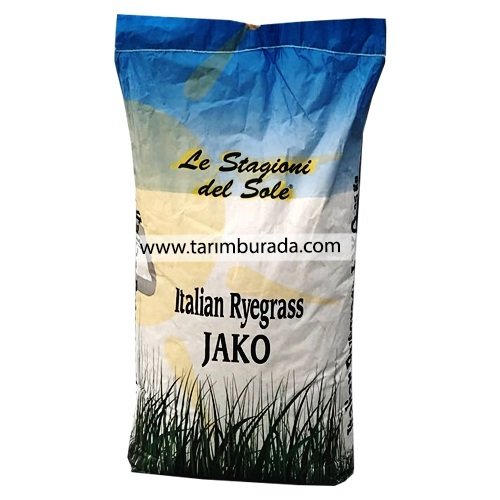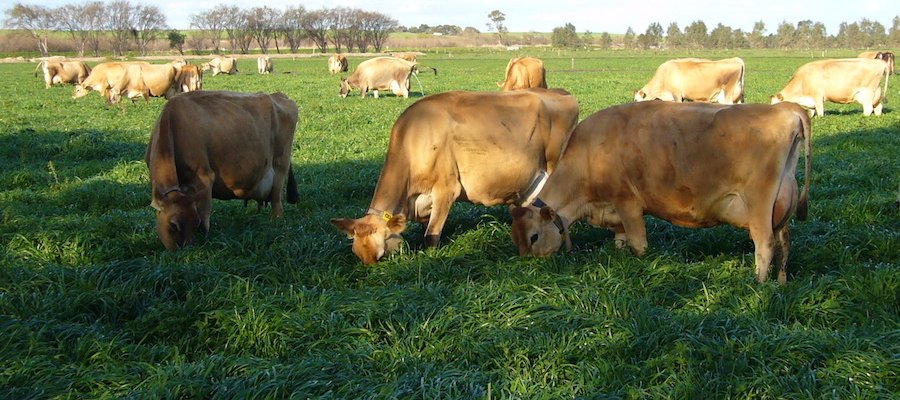
İtalyan Ryegrass Süt Otu Yem Tohumu 25 Kg
Ryegrass süt otu yem bitkisi (İthal Sertifikalı)
Hayvanların kaba yem problemini çözecek mucize bitki İtalyan Ryegrass artık Türkiye’de de yetiştirilmeye başlandı. Küçük ve büyükbaş hayvan yetiştiriciliği yapan üreticilerin kaba yem sorununa çözüm olarak önerilen bitki ile yem maliyetleri asgari düzeye iniyor.
Dekar başına 10 ila 15 ton yeşil ot üretimi sağlayan bitki, yüksek besin değeri ile yoncadan değerli kaba yemler arasında yer alıyor.
TOHUM YATAĞI: Düz tesviye edilmiş ve sıkıştırılmış olmalıdır.
TOHUM MİKTARA: 5 kg/Dekar
SIRA ARALIGl: Serpme veya 10-17,5 cm sıra aralıklı olmalıdır.
EKİM DERİNLİĞİ: 1,5-2 cm

Bitkinin ekimi hem sonbahar hem de ilkbahar da yapılıyor. Tek yıllık bir bitki olan ryegrass ile sulu alanda 5 ila 8 biçim yapılırken kurak arazilerde 2-3 biçim yapılabiliyor. Hayvanların sevdiği bir bitki olan Ryegrass bitkisi özellikle inek, koyun, manda, keçi ve at beslemesinde kullanılıyor. Bitki ile hayvanlarını besleyen üreticiler besi yemi, süt yemi ve slajı tüketimde tasarruf sağladıklarını kaydettiler.
REYGRAS OTU NE ZAMAN EKİLİR?
Özetle ılıman olan bölgelerde sonbaharda ekilir. Kışı sert geçen bölgelerde ilkbaharda ekilir. Serin ve bol yağışlı bölgelerde ilkbahar ekiminin mümkün olduğunca erken yapılması gerekmektedir. Diğer bir ifade ile ekim zamanı Ege, Akdeniz, Karadeniz ve Marmara bölgelerinde Eylül-Ekim ayları, Orta ve Doğu Anadolu bölgelerinde Ağustos sonu Eylül başı ya da Mart-Nisan aylarıdır. Yani kışı sert geçen bölgelerde erken ilkbaharda veya kışa güçlü girmesi için yaz sonunda ekilir. Kış soğuklarının erken gelmediği Ege, Akdeniz, Marmara ve geçit bölgelerinde sonbaharda ekilmesinde yarar vardır. Akdeniz ikliminin hakim olduğu bölgelerimizde ilkbaharda yapılan ekimlerde, erken gelen yaz kuraklığı ve yüksek sıcaklıklar reygrasın erken başaklanmasına ve düşük ot verimine sebep olabilir.
Diğer kaba yem bitkilerine göre farkı nedir?
Yonca ve diğer kaba yeme göre süt üretiminde yüzde 20 artış sağlıyor. Ryegrassı deneyen uzmanlar, hayvanlarda döl tutma, tırnak ayak sağlığı ve mastitis(meme iltihabı) konularında olumlu gelişmelere yol açtığını ifade ediyorlar.
Diğer kaba yemler gibi slaj, kuru ot veya günlük yeşil biçilerek hayvanlara verilen bitki Avrupa’da en çok ekilen kaba yem bitkileri arasında yer alıyor.

Kuru Madde/ Kg
/ Enerji
/Ham Protein
Yonca Silajı
385
685
168
Ryegrass
450
900
192
Mısır Silajı
320
904
88
Ca
P
Mg
K
Na
Yonca Silajı
15,1
2,7
2,8
23,0
1,2
Ryegrass
5,3
3,8
2,2
32,2
2,8
Mısır Silajı
2,0
2,2
1,3
15,0
0,1
Sılaj yapılarak,kuru ot yapılarak,günlük yeşil olarak biçilerek ve otlatılarak hayvanlara yedirirlir. Avrupa da en çok ekilen yem bitkilerinden biridir.Karlı bir süt hayvancılığı ve besi hayvancılığı italyan reygrass yem bitkisi ile yapılır.
Görüş ve önerileriniz için teşekkür ederiz.


